What’s SMS Marketing?
Published on July 19, 2019/Last edited on July 19, 2019/8 min read


Zoë Lefeuvre
Product Marketing Manager at BrazeSMS messages. You know what they are—you probably send and receive your share of texts every day. But while this digital messaging channel is popularly associated with communications between friends and family members for most consumers, it can also be a key outreach tool for brands. It can be a powerful way to engage customers when deployed effectively; however, it can be really, really annoying for recipients when it’s used poorly.
Thinking about using SMS in your marketing mix? Already sending SMS but looking to make sure you’re doing it the right way? Read on for a look at what marketing, growth, and engagement teams need to know about this key messaging channel.
What is SMS, exactly?
SMS stands for “short message service,” but most people know these kind of brief, text-focused messages as (wait for it) text messages.
As the name indicates, SMS is strongly associated with short text communications, but if you’ve ever had an argument with a significant other over text or installed a gif keyboard, you know that the medium has a wide variety of use cases. The first mobile ad to be shared via text was created in 2000. We saw the introduction of SMS shortcodes in 2003, and in 2005, major brands like Nike and Pontiac pioneered the use of SMS campaigns to create excitement and awareness for newly launched products.
SMS evolved out of standards for text-based communications for mobile devices back in the mid-1980s and is supported by virtually all mobile phones on the market, from fliphones to iPhones. SMS has a global reach which surpasses email in some markets and has remarkable deliverability given any phone in the world can accept and send SMS. That makes it a particularly appealing outreach channel for brands looking to communicate with a global customer base.
Is SMS a major messaging channel these days?
Yes—though it’s up for debate. SMS marketing gained a bit of a negative reputation in years past because of the way it was used by some companies: namely, to send scattershot, invasive blast messages that recipients weren’t interested in receiving. That legacy made many brands leery about leveraging SMS in their outreach.
But as the number of inboxes proliferates, we’ve seen SMS reemerge as a channel that marketers need to pay attention to. Today, there are thousands of companies using short codes (think “Text TENNIS to receive U.S. Open updates”) to do everything from delivering digital coupons to confirming an existing appointment.
What’s the appeal of SMS to marketers?
We’re living in a world with a lot of messaging channels. But because SMS evolved separately from push notifications and other mobile messaging channels, this outreach option has different functionalities that can make it stand out. Some of the big benefits?
Global Reach
In certain global markets—think APAC and much of Africa—SMS is the standard digital communications medium, rather than email. And a lot of consumers in emerging economies are more attached to their phones than they are to computers, with many people’s first experience of the internet coming from a mobile device. Because of infrastructure issues in some emerging economies that have made fast internet connections hard to come by, you still see a lot of flip phones in many areas, making text one of the only ways to reach these customers digitally.
Supports Two-Way Interactions
One key niche for SMS marketing? Messages that are intended to kick off an ongoing two-way conversation between customer and brand. Think appointment confirmations—where the recipient might need to signal that, actually, they need to reschedule—or restaurant reservations. In these situations, SMS can provide a simple effective medium for these back-and-forths.
Epic Open Rates
Take a look at your email inbox—how many unread messages are there? For me, the number is 4,687. But my SMS “inbox” is at inbox zero, the ultimate goal for productivity. In this case, I’m not an outlier: SMS has a 98% open rate. That means that marketers can be VERY confident that when they send an SMS message to their customers, it’s going to get read.
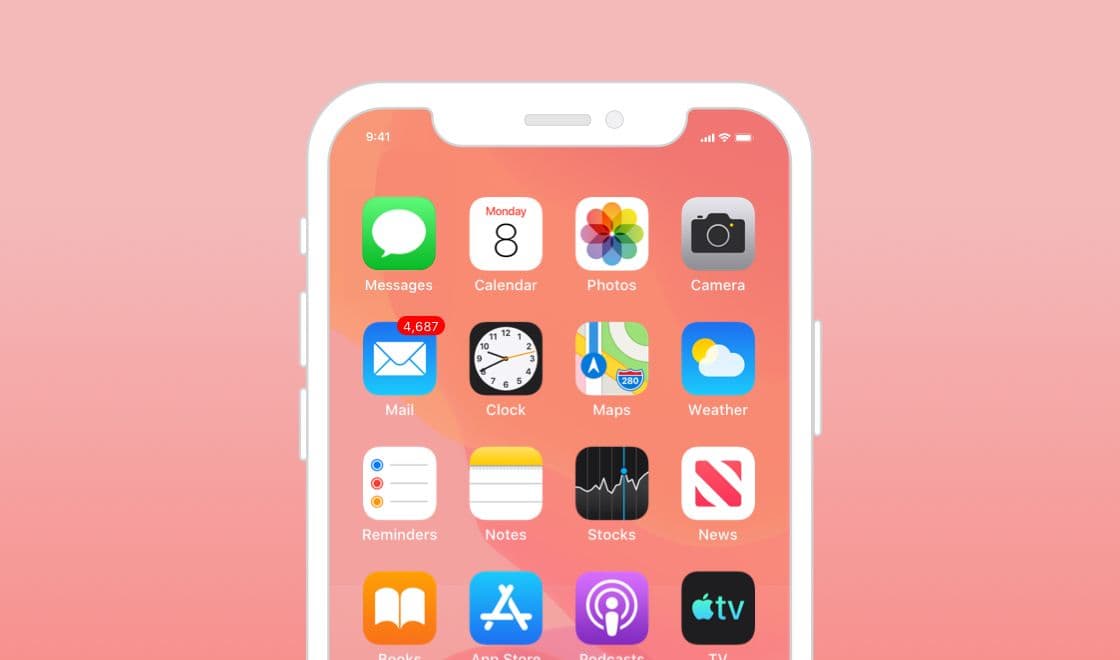
Okay, so when should my brand send SMS messages?
SMS can be an effective tool for companies looking to drive engagement and build brand loyalty. Because the medium is built around a limited character count and because consumers can be resistant to receiving frequent messages in this channel, brands have to be thoughtful about when and how they’re using SMS to engage their audience. So let’s dig into some smart use cases where this channel can shine:
Sharing Critical Information
From flight reminders and restaurant reservations to doctor’s appointments, SMS can be a powerful tool to give real time updates to consumers. When a customer’s flight is delayed and you need to rush to your gate, an SMS is going to be a more practical way to let them know than sending an email. If you’re headed to the doctor’s office in Midtown Manhattan during the U.N. General Assembly, an SMS from the medical center to inform you of changing traffic conditions is a thoughtful gesture. And popular restaurants in many cities use SMS to give diners real-time status updates on table reservations or their wait-list placement.
In all of these cases, the goal is to provide such a brilliant experience for your customers that they’ll want to continue their relationship with your brand. SMS—used thoughtfully—makes it possible for users to get the information they need at their fingertips...without fishing through 4,687 emails to find it.
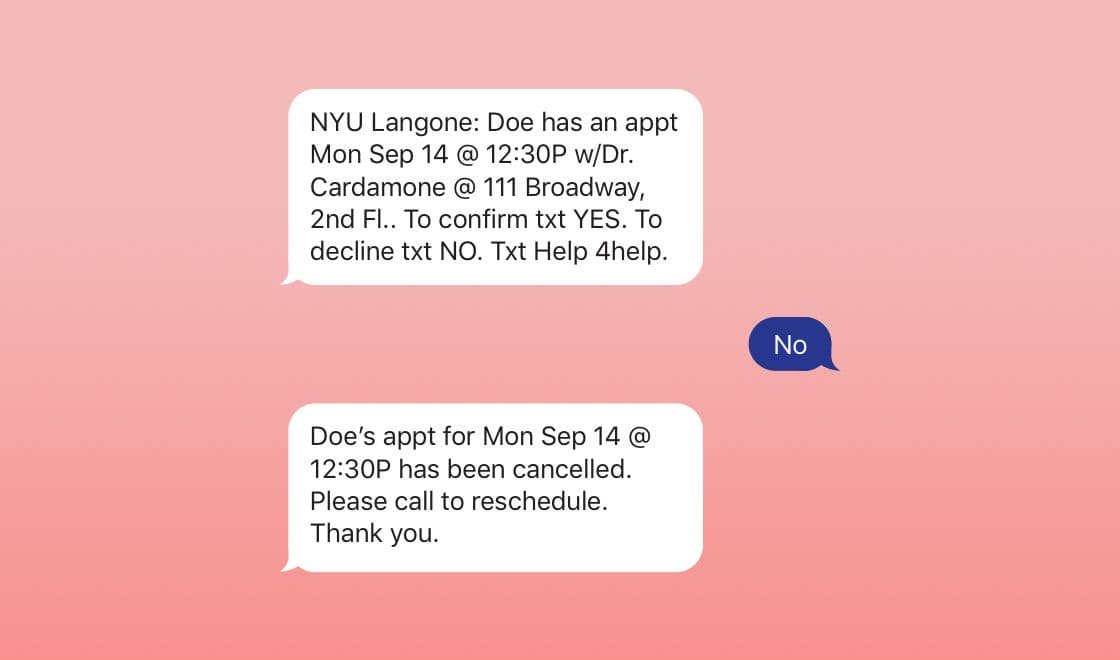
Serving Up Transactional Updates
Everyone knows that joy of clicking “buy” when they order something online. It’s waiting for the product you’ve ordered to actually be delivered that’s the hard part. With consumer expectations around delivery time getting higher and higher—driven in large part by Amazon—many brands have responded by using SMS to communicate the real-time status of each order from purchase to delivery. We’re even seeing some sophisticated brands using the medium to communicate more complex order status—such as items being out of stock or shipping occurring slower than expected—to temper expectations or potentially seek alternative products.
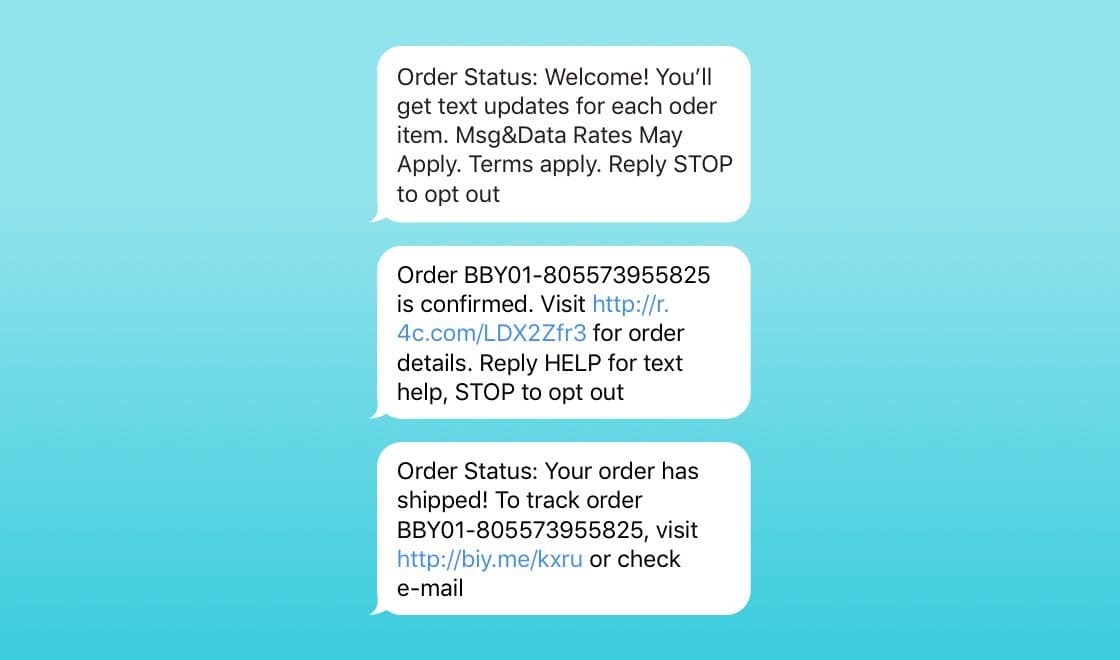
Mobile Exclusives
When a customer gives you a phone number, it’s meaningful. Most consumers today have at least two emails—a personal one, and one for work. And more sophisticated shoppers may create additional email accounts exclusively for online shopping. In contrast, the majority of people have only one phone number and use it for everything. With the decline of landline usage in the home, that one mobile number creates the opportunity for an immediate, intimate connection with that user.
Brands can use this an an opportunity reward users who allow SMS messages by offering exclusives in this channel in much the same way that some companies offer special promotions when you shop via mobile instead of on desktop. With so many browser plug-ins searching the web for deals, customers can access many offers without offering their details. By creating exclusive codes or early access to specific launches via SMS first, you can build a loyal, captive audience.
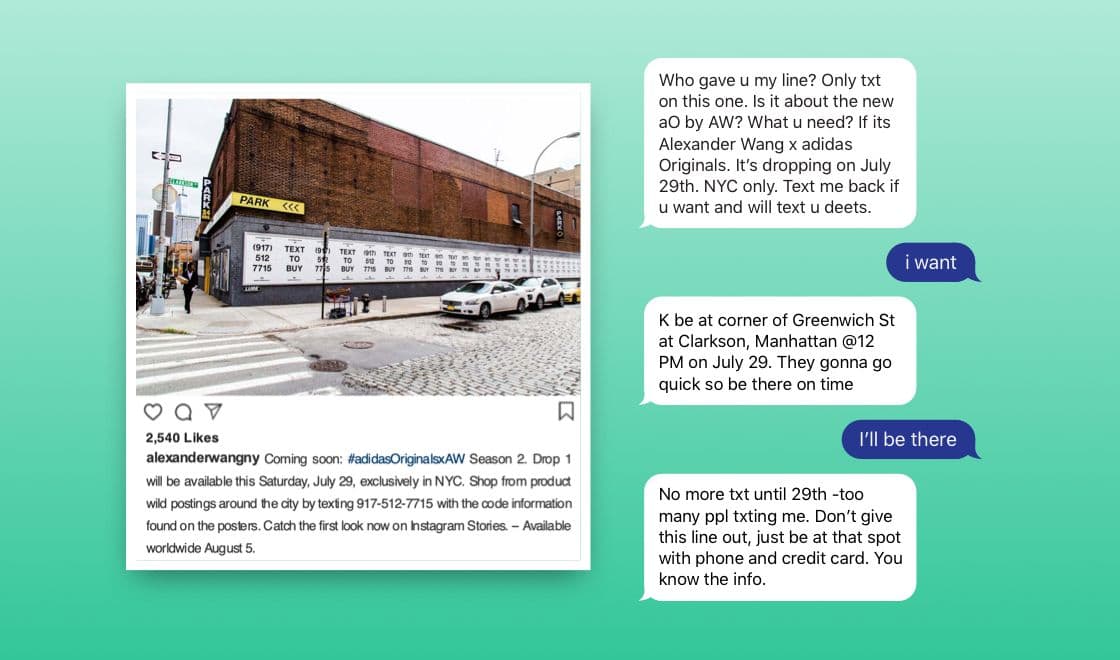
Enabling Two-Way ConversationsNothing makes a customer feel more important to a business than getting an immediate response to their questions or concerns. That’s why so many customers take to social media before even calling a customer support line or sending an email—because they know they have a captive audience in the form of the Social Media Manager on the other side of the computer (or even other potential customers reading the exchange). By opening an SMS dialogue with customers, you can provide a more responsive—and more human—brand experience. From AI powered SMS bots like Rose at the Cosmopolitan Hotel to human backed bots at digital first brands like M Gemi giving out of stock product updates, two-way conversations are another way to humanize your SMS marketing.
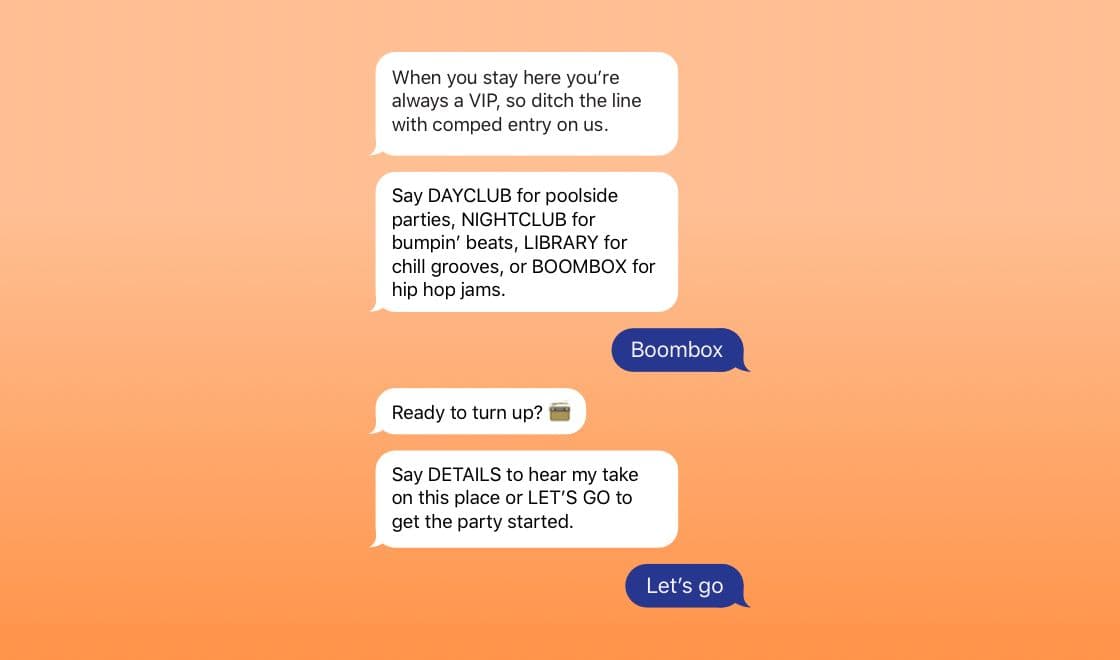
Are there any things brands need to keep in mind before using SMS for marketing?
The most critical rule of engagement from brands to be mindful of when it comes to SMS marketing is this: Just because you have an individual’s phone number on file doesn’t mean that you can send them a text message.
Because the Federal Communications Commission (FCC) adopted additional consumer protections in 2012 by pulling text messaging under the Telephone Consumer Protection Act (TCPA), SMS marketing is only legal when the person receiving the message has given you express written consent that it is okay to send them communications in this channel. That means that you can’t legally buy lists of phone numbers and send them outreach via SMS; similarly, you can’t send messages based on implicit consent (for instance, because a given individual has an established business relationship with your brand. Brands who send SMS messages without the express consent of message recipients can face significant legal ramifications, including fines. But marketers who can respectfully grow their lists and use the channel in the right ways can see great results from this less-crowded channel.
Anything Else?
Whether you’re a travel brand looking to deliver real-time updates or a retailer looking for a way to reach customers who don’t use smartphones, SMS can be a powerful tool for taking your marketing outreach from basic brilliant. But don’t stop there—customer messaging is more effective when it includes multiple channels used in concert. Are you already sending email? Push notifications? Take a holistic look at your current messaging mix and think through how SMS could contribute before hitting go. Your customers will thank you.
Related Tags
Be Absolutely Engaging.™
Sign up for regular updates from Braze.
Related Content
View the Blog
How AI Decisioning Transforms Marketing (A Complete Guide)

Team Braze

AI decisioning cheat sheet: How to crawl/walk/run with BrazeAI Decisioning Studioᵀᴹ

Team Braze

A day in the life of a data scientist on the BrazeAIᵀᴹ forward-deployed engineering team
